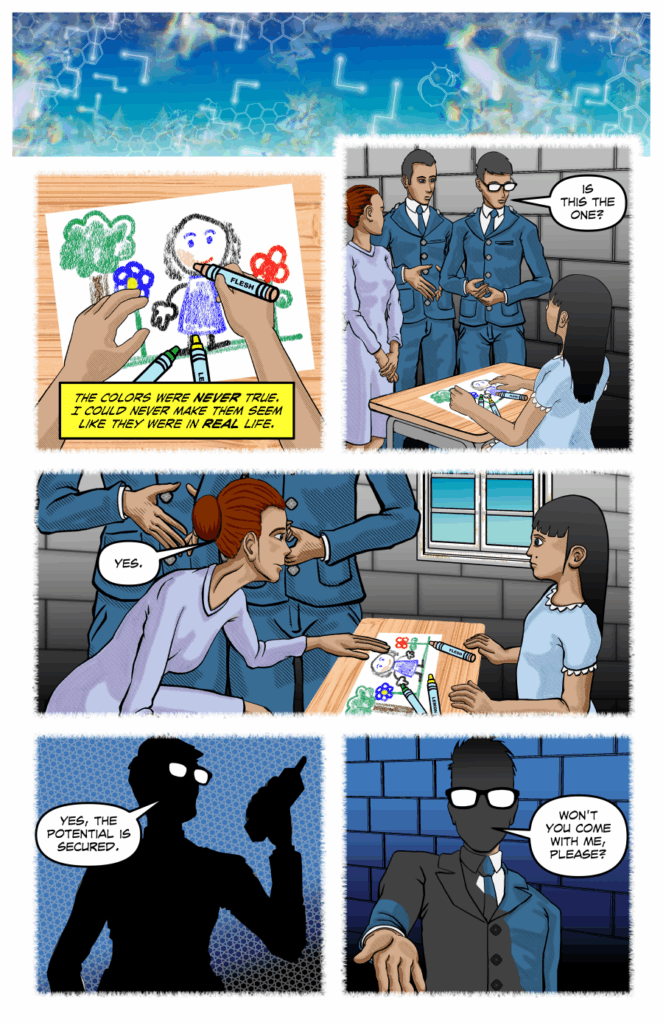Creative notes: Flashbacks are one of those things that movies make look easy. Need to show the past? Toss on a wig, change the lighting, swap out the set — done. But in comics? Yeah… not quite that simple.
This week’s offering of Midwife, aborted dives into a flashback, and when Jackwraith and I started talking through how to make that transition work, we both realized just how tricky it can be to pull off in the comic book format. You can’t just rely on a costume change or a younger actor — everything has to be drawn in a way that feels different but still fits the flow of the story.
For me, the biggest challenge was figuring out how to show that shift in time without making it a distraction. We ended up playing around with the visuals — removing the panel borders and adding this soft, “fuzzy” edge that gives it a sort of dreamlike quality. It’s subtle, but hopefully it cues readers that we’ve slipped into the past.
You’ll meet a few new faces in this sequence, but for Angie, I wanted something that would connect her across the years. Her hairstyle stays in the same general style, and that little mole on her left cheek — that’s her anchor. It’s one of those small details that helps readers recognize her instantly, even when time itself starts to blur.















